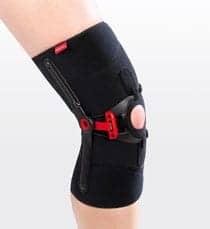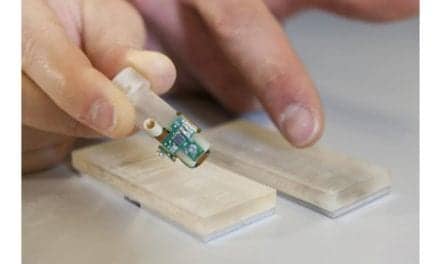Reportedly the first-ever Consensus Document offers recommended approaches for treating knee osteoarthritis (OA) patients based on their age and activity level. A global panel of more than 40 experts in various orthopaedic disciplines compiled the document.
The Consensus Document is the result of a 2019 conference where clinicians, including globally recognized physiotherapists, general practitioners, rheumatologists and orthopedic surgeons, explored a variety of topics regarding the continuum of care for knee OA, including newer options such as stem cells and hyaluronic acid as well as topics related to treating OA in younger patients and the mechanics of joint loading following knee injury.
The event was sponsored by Össur, a provider of prosthetic and orthopaedic technologies.
Attendees participated in three workshops where they developed recommendations for managing knee OA with treatment objectives based on three categories of patients:
- Preserving cartilage in knee OA patients with active lifestyles who wanted to maintain moderate-to-high activity levels
- Reducing pain, preserving cartilage and helping less-active knee OA patients improve their activity levels
- Helping younger patients reduce their moderate-to-severe OA-related pain and maintain current activity levels
The resulting recommendations clearly define approaches for diagnosis, conservative treatment – comprised of core treatment, biomechanical, pharmaceutical, orthobiologic and alternative treatments – and surgical options, as specified by patients’ characteristics and expectations.
“Management of knee OA is a multi-disciplinary undertaking, and patients’ self-motivation is key to successful outcomes. However, because there were no definitive recommendations for addressing treatment approaches that also consider patients’ expectations and mobility levels, this panel of experts accepted the challenge of developing a clearly-articulated set of recommendations that includes patients’ perspective and experience throughout the knee OA spectrum.”
— Dr Micah Nicholls, Össur’s Medical Director
Consensus Recommendations: Active Knee OA Patients
One group of clinical experts focused on the needs and expectations of knee OA patients who wished to maintain high activity levels despite OA-related pain.
For these patients, during the initial 6-week acute phase the panel recommended a long leg standing x-ray and physical examination, water-based, land-based and strength training exercises, and counseling the patient on self-education and weight management strategies. The panel also recommended the use of oral or topical NSAIDs and paracetamol/acetaminophen, as well as physiotherapy, RICE/cryotherapy, and psychological support as appropriate.
Finally, during the acute phase, the consensus was to use Orthotic insoles and a biomechanical unloading brace such as Össur’s Unloader One braces.
For patients whose condition had progressed into the subacute and ongoing phases and remained non-responsive, the panel recommended additional diagnostic imaging, including MRI and ultrasound as well possible medical interventions such as dynamic taping, steroid injections, hyaluronic acid (HA), or platelet-rich plasma (PRP) injections.
Recommendations: Older, Less Active OA Patients
A second panel of clinical experts focused on the needs of the elderly, less active patient population. They emphasized the importance of initial clinical and functional investigations during the initial 6-week acute phase to identify the root cause of referred pain, as well as specific muscle-strengthening exercises, assessments of appropriate footwear use, and gait analysis and retraining to correct any limb misalignment. The panel also recommended short-term use of oral or topical NSAIDs as well as HA and PRP injections.
Beyond the acute phase, unloader bracing was recommended, as was continued HA injections with the intention of maintaining cartilage preservation. The panel also recommended that if HA alone were unsuccessful, clinicians should switch between PRP and HA injections every four months according to patient response.
The panel also considered optional treatments, such as paracetamol/acetaminophen, corticosteroid injections, supplements including capsaicin, glucosamine-chondroitin sulfate, and other alternatives such as oral collagen, adipocytes, placental derivatives and stem cells. Other optional conservative treatments included yoga, tai chi, cold therapy, shockwave, induction therapy, acupuncture, and quad stimulation.
For older, less active patients beyond the acute phase, the panel also recommended adding weak opioids with a designated end-date and a maximum of two corticosteroid injections. The panel also recommended clinicians consider recommending osteotomy, cartilage repair and arthroplasty procedures to help patients who remained non-responsive over the longer term.
Consensus Recommendations: Younger Knee OA Patients
A third panel considered the literature and provided recommendations for addressing the needs of younger patients with knee OA. This group represents a rapidly growing subset of the knee OA patient community.
Diagnostically, the panel recommended clinical and functional inspection, and x-rays, including a long leg x-ray for patients with varus or valgus misalignment. Other diagnostic imaging, such as ultrasound and MRI were considered optional. However, ultrasound was indicated in cases of swelling, particularly in patients who remained symptomatic four months or longer.
In the acute phase following diagnosis, the panel recommended short-term use of oral or topical NSAIDs, as well as patient education, weight management strategies, exercise, counseling and appropriate footwear. Patients who were non-responsive to these practices were also recommended functional insoles and/or an unloader knee brace to assist with pain and enhance mobility.
The panel considered a variety of other treatment approaches, including paracetamol/acetaminophen, steroidal injections, kinesio tape, ablation of the genicular nerve, and ice compression, and categorized all of these as optional. They also deemed a variety of supplements, such as capsaicin, oral collagen, adipocytes, placental derivatives and stem cells as strictly optional.
This panel recommended some modifications in treatment approaches as young patients’ OA progressed into the subacute and ongoing phases. The administration of glucosamine-chondroitin sulfate, which was considered optional during the acute phase, was recommended on an ongoing basis thereafter. HA injections with the intention of maintaining cartilage preservation was recommended in non-responsive patients after the acute phase, well as for patients who were responding to the recommended protocol, beyond the three-month mark.
The panel also suggested that if HA therapy was unsuccessful, HA injections should be alternated with PRP injections. Finally, the panel suggested that for patients who remained non-responsive longer term, corticosteroid injections and surgical procedures, including osteotomy, arthroscopy and arthroplasty should be considered.
“We appreciate the contributions of all of our clinical experts in developing the first-ever consensus document for treating Knee OA patients according to their psychological as well as physical state.
“Our hope is that these Consensus Documents provide guidance for clinicians who are faced with treating the significant and growing population of OA patients worldwide.”
— Dr Micah Nicholls
[Source: Össur]
Related Content:
Growth Factor Shows Promise as Knee Osteoarthritis Treatment
Heberden’s Nodes May Indicate Knee Osteoarthritis Damage
These New Prostheses from Össur Are Designed for Less Active People





